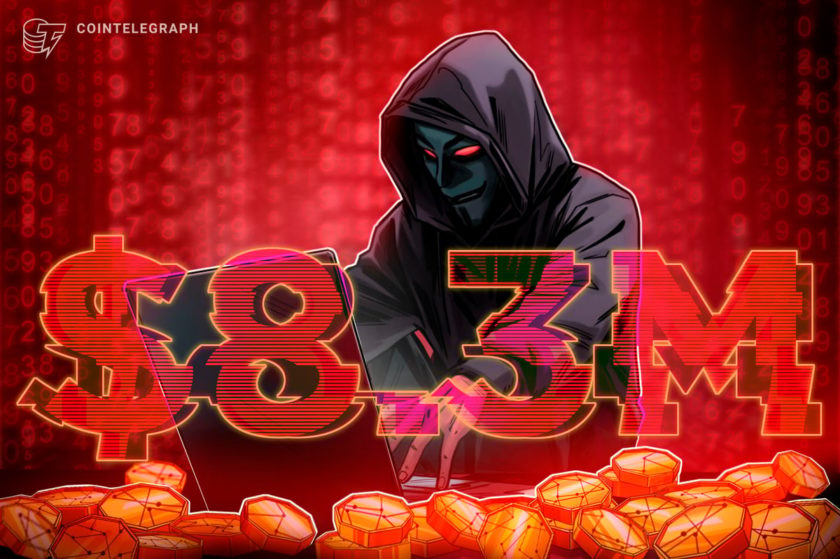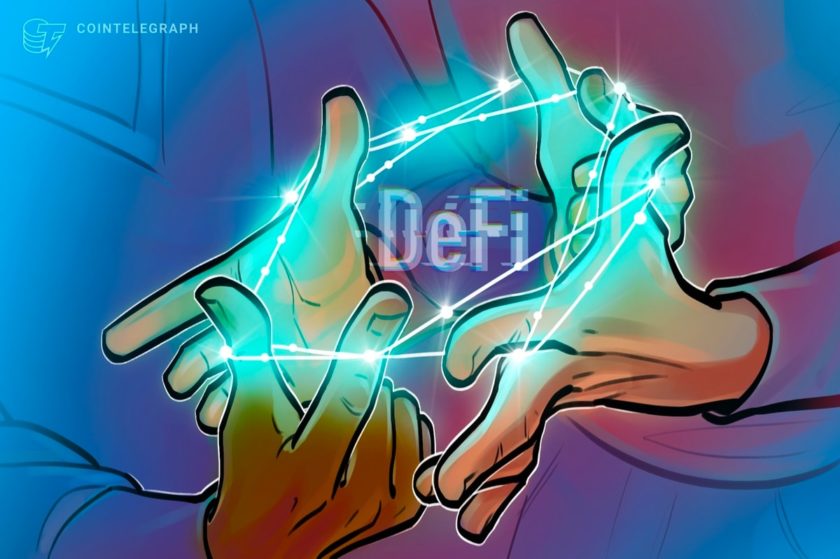Hester Peirce, commissioner for the United States Securities and Exchange Commission, explained during an exclusive interview with Cointelegraph that decentralized finance, also known as DeFi, has created new challenges for the SEC.
Peirce, nicknamed “Crypto Mom” for her interest in digital-asset innovation, mentioned that the quickly rising DeFi sector has resulted in a number of unresolved legal issues:
“DeFi has posed a challenge for the SEC in a similar way that the ICO boom did in 2017. What is different here is that the pace of DeFi has actually been much faster. I also think that the legal issues are more difficult to sort out on the DeFi side.”
Although Peirce shared that regulations around DeFi projects may fall outside of the SEC’s purview, some of these projects will likely touch on securities laws. To Peirce’s point, John Whelan — managing director of Santander Bank and chair of the Enterprise Ethereum Alliance — told Cointelegraph that from a financial perspective, DeFi has the potential to enable autonomous programmable digital securities in the future.
However, this remains a long-term goal, as most DeFi offerings consist of tokens that lack liquidity and are used to fund blockchain projects. Still, Peirce advised caution to those involved in the DeFi space. During a fireside chat with Whelan for the “Ethereum in the Enterprise — Asia Pacific” online conference, Peirce mentioned that the crypto community must be cautious when building DeFi projects:
“I caution people to think about what they’re building, and to think about whether it looks like the traditional security. If it does, talk to the SEC because individuals can really get in trouble if they develop one of these things. That would be my advice.”
In addition to legal hurdles, Peirce pointed out that the goal behind decentralized finance is removing third-party intermediaries, such as banks and exchanges. However, Peirce mentioned that the SEC depends on these intermediaries. “Our whole rulebook is built around the notion that you’ve got these intermediaries. So when you take them out of the picture our job as regulators becomes very difficult,” she said. Not only does this pose a challenge for the SEC, but the lack of intermediaries in DeFi may be to blame for the numerous hacks and fraudulent activities in the space. A report published by blockchain intelligence firm CipherTrace shows that 45% of all cryptocurrency-related hacks during the first half of 2020 targeted DeFi projects. Moreover, intermediaries must be present in order for DeFi applications to be leveraged by institutions and businesses. Yet Peirce touched on the notion that the financial industry’s lack of innovation is partly due to regulatory barriers. In her fireside chat with Whelan, Peirce explained that regulatory barriers protect traditional financial institutions from competition, something that she is trying to change. “I want to see what happens when you have a really truly competitive playing field,” Peirce said. DeFi concerns aside, Pierce seems optimistic about the recent launch of the Ethereum 2.0 Beacon Chain, which will surely bring about new projects within the Ethereum community. Given new developments in the Ethereum network, Peirce explained that her proposed Safe Harbor framework for blockchain projects will likely develop further. She first announced the proposal in August 2019 and outlined it further in February at the International Blockchain Congress in Chicago. In a nutshell, the Safe Harbor proposal would grant network developers a three-year grace period to build decentralized projects without worrying about SEC legal action, provided they meet a basic reporting standard at the beginning of that time. According to Pierce, she is currently working on version 2.0 of the Safe Harbor framework, yet she doesn’t expect the proposal to be ready anytime soon. The commissioner noted that “it may be slower to come out than the launch of Ethereum 2.0.” Although this is the case, Pierce recognized that Ethereum 2.0 is evidence that there is still indeed a case for the Safe Harbor framework. She further shared hopes that the new SEC chairman will want to work on issues related to digital asset innovation. Of course, Ethereum 2.0 could present new challenges for the SEC as well. Whelan pointed out that from a technical perspective, the move away from the probabilistic settlement of a proof-of-work consensus mechanism to the deterministic settlement of proof-of-stake might solve technical challenges while prompting new legal questions for the SEC. Whelan said: “Ethereum 2.0 has settlement finality built in, meaning after some time the update in the blockchain is final and cannot be revisited. This speaks to questions that come up in legal terms, though.” Peirce said that she hadn’t considered this before. “I think this is a great point. We want that moment when things are done of course, but I have to think more about what this could mean,” she remarked. With the rise of DeFi quickly taking over the crypto space, Peirce mentioned that moving forward, the SEC should provide guidance around decentralized finance: “We have brought enforcement actions and I think we’ll continue to bring enforcement actions. The bigger concern, from my perspective, is we have to go after fraud that’s clear. We have to go after people who violate the rules but I think that until we develop a framework that provides guidance, it’s, it’s really problematic to take an enforcement-first approach.” Another “pressing issue” Peirce pointed out is the need to provide relief around custody for broker dealers and investment advisers. This is important, as the SEC and the Financial Industry Regulatory Authority outlined a claim in July 2019 saying that a crypto custody service may not be able to sufficiently demonstrate that it actually controls the assets it purports to hold. Even more interesting is that the SEC may eventually move forward on an exchange-traded product based on Bitcoin (BTC) or Ether (ETH). While Peirce mentioned this, she also noted that progress has been disappointing. DeFi challenges SEC by taking away intermediaries
Eth 2.0 brings back case for Safe Harbor Framework
Moving forward with an exchange-traded product based on Bitcoin or Ether
Related posts




